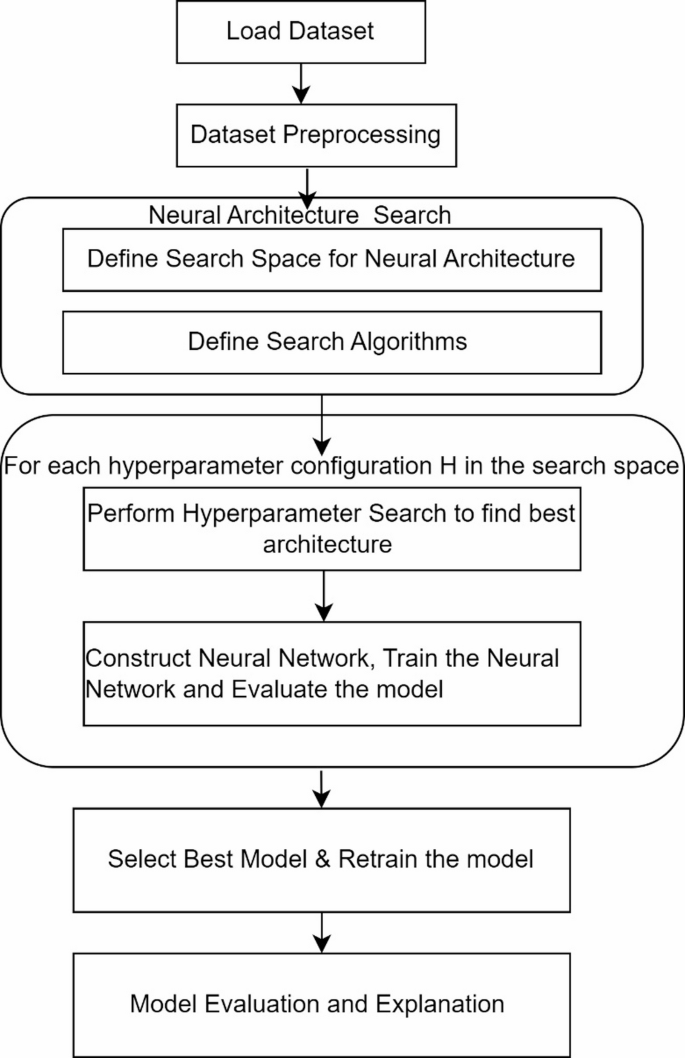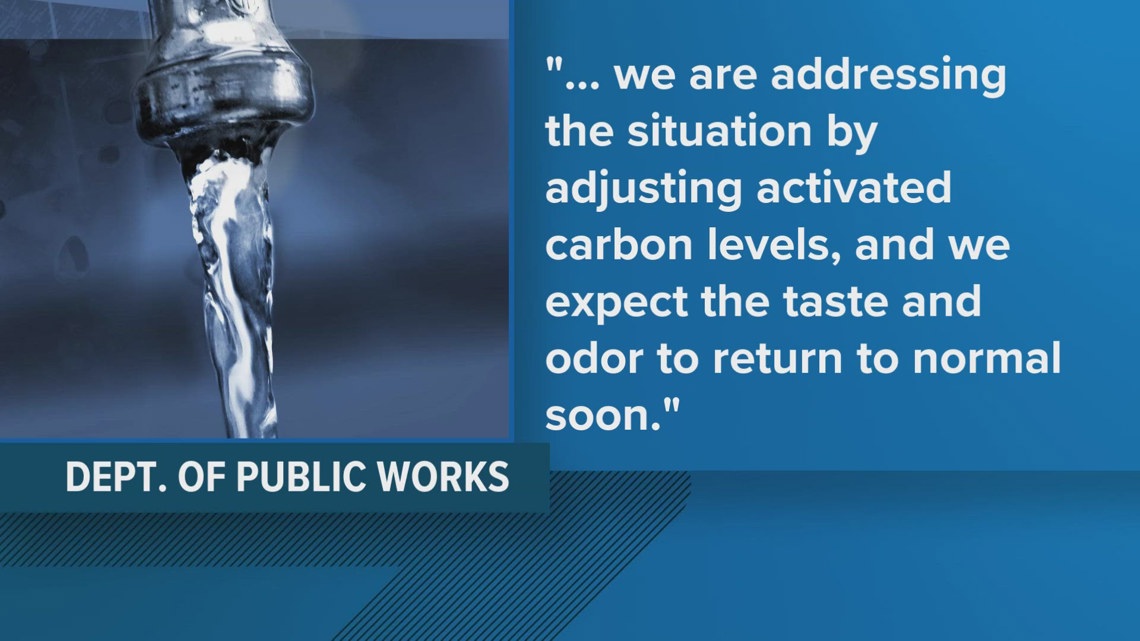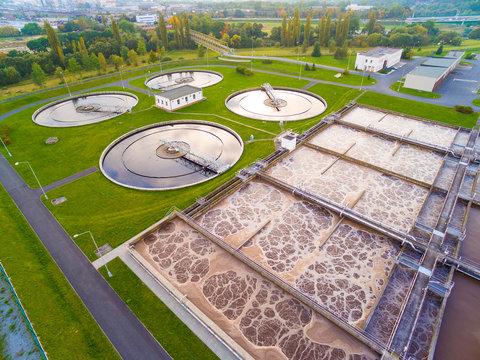Report on Automating Wastewater Parameter Quantitation for Sustainable Development
Introduction: Aligning Wastewater Management with Sustainable Development Goals
Effective wastewater management is a cornerstone for achieving several United Nations Sustainable Development Goals (SDGs). Rapid urbanization and industrial growth place immense pressure on water resources, directly challenging the objectives of SDG 6 (Clean Water and Sanitation) and SDG 11 (Sustainable Cities and Communities). The discharge of untreated or poorly treated wastewater degrades aquatic ecosystems, hindering progress towards SDG 14 (Life Below Water). Consequently, wastewater treatment plants (WWTPs) are critical infrastructure for protecting public health and environmental integrity.
Traditional methods for monitoring key wastewater quality parameters are often time-consuming, delaying operational adjustments and compromising treatment efficiency. This report details a study that leverages Artificial Intelligence (AI) to address this challenge, contributing to SDG 9 (Industry, Innovation, and Infrastructure) by applying cutting-edge technology to enhance the sustainability of water infrastructure. The study focuses on the rapid and accurate prediction of six critical parameters, which are essential for ensuring compliance with environmental regulations and advancing the goals of responsible water stewardship.
- Biochemical Oxygen Demand (BOD)
- Chemical Oxygen Demand (COD)
- Ammonia (NH3-N)
- Total Dissolved Solids (TDS)
- Total Alkalinity (TA)
- Total Hardness (TH)
Methodology: An Innovative Framework for Sustainable Water Quality Prediction
This study proposes an advanced framework using Automated Machine Learning (AutoML) to develop highly accurate predictive models for wastewater quality. This approach automates the complex process of designing neural network architectures, providing an efficient and scalable solution to support the operational needs of modern WWTPs and contribute to the targets of SDG 6.3, which aims to improve water quality by reducing pollution.
Automated Model Development with Neural Architecture Search (NAS)
The core of the methodology is the application of Neural Architecture Search (NAS), an AutoML technique that systematically discovers optimal neural network (NN) architectures. By automating model design, this approach eliminates the need for manual trial-and-error tuning, making advanced AI more accessible for enhancing critical infrastructure. The study evaluated four distinct NAS search algorithms to identify the most effective strategy for this environmental application:
- Random Search
- Grid Search
- Bayesian Optimization
- Hyperband Search
Dataset and Key Parameters for SDG Monitoring
The models were trained using a dataset comprising spectral reflectance data of wastewater samples collected from a municipal treatment facility. The input variables consisted of spectral reflectance intensity in the 400–2000 nm range. The output variables were the concentrations of the six key water quality parameters. Accurate prediction of these parameters is fundamental to monitoring treatment efficacy and ensuring that discharged water does not harm the environment, directly supporting the monitoring frameworks for SDG 6 and SDG 14.
Model Interpretability through Explainable AI (XAI)
To ensure that the AI models are not opaque “black boxes,” the study integrated the Local Interpretable Model-agnostic Explanations (LIME) technique. This XAI method provides clear insights into which input features most significantly influence the model’s predictions. Such transparency is crucial for building trust among plant operators and regulators, facilitating the adoption of AI-driven decision-making to achieve sustainability targets and promote responsible innovation under SDG 9.
Results and Analysis: Performance and Implications for Sustainable Operations
The experimental results demonstrate the high efficacy of the AutoML approach in predicting wastewater quality parameters, offering significant potential to enhance operational efficiency and support sustainable water management practices.
Single-Target Prediction Performance
For the task of predicting each of the six parameters individually, the neural network architecture optimized via Bayesian Optimization demonstrated superior performance. It consistently achieved the lowest mean absolute error (MAE) and the highest coefficient of determination (R²). The high accuracy achieved for all parameters underscores the potential of this technology to provide reliable, real-time data for process control, helping facilities meet stringent environmental standards and contributing to the protection of water resources as mandated by SDG 6.
- BOD Prediction (R²): 0.9770
- COD Prediction (R²): 0.9860
- NH3-N Prediction (R²): 0.9800
- TDS Prediction (R²): 0.9776
- TA Prediction (R²): 0.9847
- TH Prediction (R²): 0.9639
Multi-Target Prediction for Integrated Water Management
The study also assessed the models’ ability to predict multiple parameters simultaneously, a capability that aligns with the need for holistic and integrated water resource management. In multi-target scenarios, the Bayesian Optimization and Hyperband search algorithms proved most effective. Notably, when predicting all six targets, the Hyperband-optimized model achieved a significantly better R² value for Total Hardness (TH), a parameter that proved challenging for other models. This demonstrates the system’s robustness and its utility in providing a comprehensive overview of water quality, which is essential for making informed decisions that support SDG 12 (Responsible Consumption and Production) through efficient resource use.
Operational Insights from Explainable AI
The LIME analysis provided valuable interpretations of the models’ predictions, identifying the specific spectral bands that were most influential in determining parameter concentrations. This level of insight transforms the predictive model into a practical diagnostic tool. Plant engineers can use this information to understand the underlying drivers of water quality fluctuations, enabling proactive adjustments to treatment processes. This capability enhances operational resilience and supports the continuous improvement of infrastructure, a key tenet of SDG 9.
Conclusion: Advancing Sustainable Water Management through AI
This study successfully demonstrates that AutoML systems utilizing Neural Architecture Search are powerful tools for accurately predicting critical wastewater quality parameters. The Bayesian Optimization search strategy emerged as the most robust and effective method for both single and multi-target prediction tasks, delivering models with high accuracy and reliability.
By automating the development of sophisticated predictive models, this work contributes directly to the advancement of the Sustainable Development Goals. The ability to perform rapid, reliable, and interpretable water quality analysis empowers WWTP operators to optimize treatment processes, ensure regulatory compliance, and minimize environmental impact. This technological advancement represents a significant step towards building the smart, resilient, and sustainable water infrastructure required to achieve SDG 6, support the growth of SDG 11, and protect SDG 14 for future generations.
Analysis of Sustainable Development Goals in the Article
1. Which SDGs are addressed or connected to the issues highlighted in the article?
The article on automating wastewater parameter quantitation connects to several Sustainable Development Goals (SDGs) by addressing environmental sustainability, technological innovation, and public health through improved water management.
-
SDG 6: Clean Water and Sanitation
This is the most directly relevant SDG. The article’s primary focus is on improving the efficiency of wastewater treatment plants (WWTPs). It explicitly states that “Wastewater treatment plays a vital role in preventing the damaging consequences of human waste on ecosystems and protecting public health” and is “key to environmental sustainability through alleviation of water scarcity and pollution.” By developing a rapid and accurate method for predicting wastewater quality parameters, the research contributes directly to better management and treatment of water resources.
-
SDG 9: Industry, Innovation, and Infrastructure
The article is centered on technological innovation. It presents an “original application of Auto Machine Learning (AutoML) models” and employs advanced techniques like “Neural Architecture Search (NAS)” and “Explainable AI (XAI)”. This research contributes to upgrading the technological capabilities of the wastewater treatment industry, making the process more efficient and sustainable. The goal is to replace “time-consuming” manual procedures with automated, intelligent systems, which aligns with building resilient infrastructure and fostering innovation.
-
SDG 11: Sustainable Cities and Communities
The article links the increasing volume of wastewater to “rapid urbanization.” It notes that WWTPs treat wastewater from “industrial and municipal sources.” By improving the efficiency of municipal wastewater treatment, the proposed technology helps cities manage their waste more effectively, reducing their environmental footprint and contributing to urban sustainability.
-
SDG 14: Life Below Water
The introduction mentions that wastewater treatment is crucial for “preventing the damaging consequences of human waste on ecosystems.” Untreated or poorly treated wastewater is a major source of land-based pollution that affects rivers and ultimately marine environments. Pollutants discussed in the article, such as ammonia (NH3-N), are a form of nutrient pollution that can harm aquatic life. Improving treatment efficiency helps reduce this pollution, thereby protecting life below water.
2. What specific targets under those SDGs can be identified based on the article’s content?
Based on the issues discussed, several specific SDG targets can be identified:
-
Target 6.3: Improve water quality by reducing pollution and increasing recycling
The article directly addresses this target by focusing on improving the process of wastewater treatment. The entire study is aimed at accurately predicting and monitoring pollutants like BOD, COD, and NH3-N to “ensure that treatment processes remain within regulatory limits.” The mention of “Wastewater recycling” also connects to the goal of increasing safe reuse globally. The proposed AutoML system is a tool to help achieve the goal of halving the proportion of untreated wastewater through more efficient plant operation.
-
Target 9.4: Upgrade infrastructure and industries for sustainability
The research promotes the adoption of “clean and environmentally sound technologies” (in this case, AI and AutoML) to enhance the efficiency of an existing industry (wastewater treatment). By automating the monitoring process, the technology helps retrofit and upgrade these facilities to be more sustainable and resource-efficient.
-
Target 9.5: Enhance scientific research and upgrade technological capabilities
This article is a piece of scientific research aimed at solving a practical problem using advanced technology. It contributes to the body of knowledge on applying AI in environmental management and directly supports the goal of upgrading the technological capabilities of industrial sectors.
-
Target 11.6: Reduce the environmental impact of cities
The technology described in the article provides a more efficient way to manage municipal wastewater. This directly contributes to reducing the adverse per capita environmental impact of cities by improving waste management practices and ensuring higher quality of discharged water.
-
Target 14.1: Reduce marine pollution from land-based activities
By enabling more effective removal of pollutants such as ammonia (NH3-N), which is a form of nutrient pollution, the technology helps reduce pollution from land-based sources like municipal and industrial wastewater discharge, which is a primary contributor to marine pollution.
3. Are there any indicators mentioned or implied in the article that can be used to measure progress towards the identified targets?
The article does not cite official SDG indicators, but it is rich with parameters and metrics that serve as direct or implied indicators for measuring progress.
-
Indicators for Water Quality (Target 6.3, 11.6, 14.1)
The core of the article is the prediction of specific water quality parameters, which are themselves indicators of pollution levels. Progress can be measured by monitoring the concentrations of these substances in treated wastewater effluent.
- Biochemical Oxygen Demand (BOD)
- Chemical Oxygen Demand (COD)
- Ammonia (NH3-N)
- Total Dissolved Solids (TDS)
- Total Alkalinity (TA)
- Total Hardness (TH)
-
Indicators for Technological Advancement and Efficiency (Target 9.4, 9.5)
The article provides clear metrics to evaluate the performance of the innovative technology it proposes. These can be used as indicators of technological capability and efficiency.
- Prediction Accuracy of Models: The article extensively uses the coefficient of determination (R²) and mean absolute error (MAE) to measure the performance of the AutoML models. Higher R² and lower MAE values indicate a more effective technology.
- Efficiency of Monitoring: An implied indicator is the reduction in time required for wastewater analysis. The article contrasts its rapid AI-based approach with traditional methods that “take many hours or even days to complete,” highlighting the gain in operational efficiency.
- Adoption of Advanced Technology: The study itself, focusing on AutoML, NAS, and XAI, is an indicator of ongoing research and development aimed at integrating advanced digital technologies into the water sector.
4. Table of SDGs, Targets, and Indicators
| SDGs | Targets | Indicators |
|---|---|---|
| SDG 6: Clean Water and Sanitation | Target 6.3: By 2030, improve water quality by reducing pollution, eliminating dumping and minimizing release of hazardous chemicals and materials, halving the proportion of untreated wastewater and substantially increasing recycling and safe reuse globally. |
|
| SDG 9: Industry, Innovation, and Infrastructure |
Target 9.4: By 2030, upgrade infrastructure and retrofit industries to make them sustainable, with increased resource-use efficiency and greater adoption of clean and environmentally sound technologies.
Target 9.5: Enhance scientific research, upgrade the technological capabilities of industrial sectors. |
|
| SDG 11: Sustainable Cities and Communities | Target 11.6: By 2030, reduce the adverse per capita environmental impact of cities, including by paying special attention to air quality and municipal and other waste management. |
|
| SDG 14: Life Below Water | Target 14.1: By 2025, prevent and significantly reduce marine pollution of all kinds, in particular from land-based activities, including marine debris and nutrient pollution. |
|
Source: nature.com






